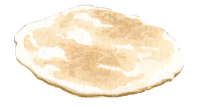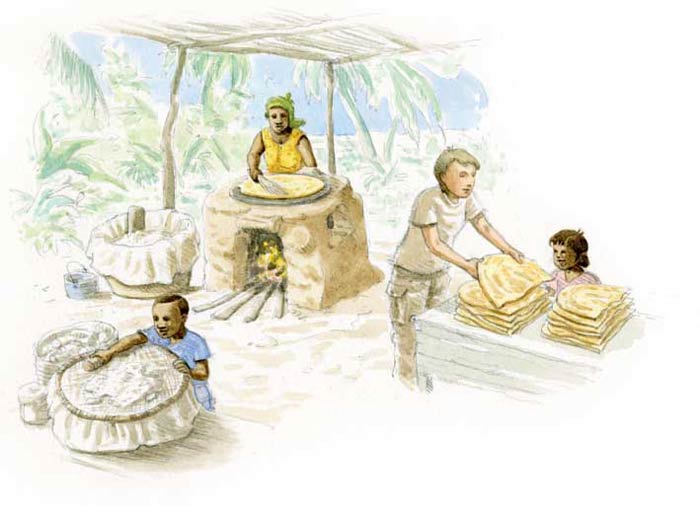Cassava bread

Form: Extra-thin griddlecake
Country of origin: Amazon and Caribbean
What distinguishes it from other methods of bread making: Made with manioc flour
Category of bread: (1 and 6) Although manioc flour is used instead of wheat or corn, cassava bread has a huge number of cousins in North America and Latin America.
Particularity: The manioc pulp contains toxic cyanide that must be extracted before being able to make it into bread
Ingredients: The manioc pulp contains toxic cyanide that must be extracted before being able to make it into bread Ingredients: Manioc flour; salt; water

Amazon and Caribbean
Christopher Columbus undoubtedly tasted this cassava bread made with manioc flour on his first trip to the New World at the end of 1492 – first in San Salvador, then in Cuba, and later in island of Hispaniola, today’s Santo Domingo. Originally an Amazon people, they came to this island long before the Spanish. They made this bread and offered it to their peculiar visitors, who thought they were from Japan.
Cassava bread resembled nothing their European palates had ever eaten. You can imagine the hesitation the Spanish sailors had about putting this piece of strange-looking griddlecake in their mouths and taking it back on the ship with them. But they didn’t die despite their audacity and lack of enthusiasm. Though the crew was left wanting, the sailors thanked them in their wariness. It was nonetheless with this cassava bread that they added to their provisions and took to sea again.
Manioc is a shrub found widely in Latin America. Its roots are carefully pressed into a pulp, and thoroughly drained to remove the toxic juices. This pulp is shaped into extra-thin cakes up to one meter in diameter, making them somewhat resemble Lebanese markup. They are then seized on a griddle. After cooking, they are cut up into pieces or folded so they can be carried and conserved. It is the capability of long storage life that made the Spanish decide to store them in their galleons, even though the crew had very mixed feelings about the taste. Still today, manioc roots are used to prepare a starch, which can then be used as a thickener in cooking: tapioca.

